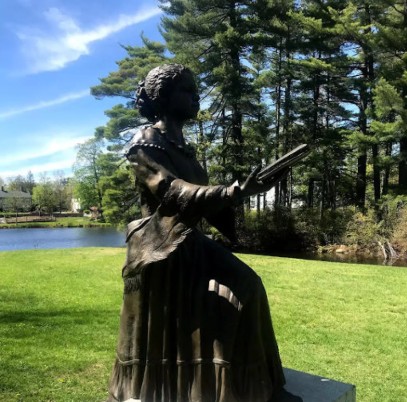by:
09/05/2025
0
Harriet E. Wilson was a pioneering African American author whose life and work offer a powerful window into 19th-century Black experience in the North:
Early Life and Background
Harriet E. Wilson was born Harriet E. Adams on March 15, 1825, in Milford, New Hampshire [1]. She was of mixed race—her mother, Margaret Ann Smith, was a white washerwoman of Irish descent, and her father, Joshua Green, was a Black barrel-maker of African and Native American ancestry [1].
After her father's death, Harriet was abandoned by her mother and placed with the Hayward family as an indentured servant, a common practice for orphaned children at the time. Her experiences with the Haywards—marked by physical and emotional abuse—inspired her later novel Our Nig, where she fictionalized her life as the character "Frado" [1].
Adulthood and Family Struggles
After her indenture ended at age 18, Harriet worked as a house servant and seamstress. In 1851, she married Thomas Wilson, a man who claimed to be a fugitive slave but later admitted he fabricated the story to gain support from abolitionists [1]. He abandoned Harriet shortly after their marriage.
Pregnant and ill, Harriet was sent to the Hillsborough County Poor Farm, where she gave birth to her son, George Mason Wilson, in 1852. Unable to support him, she placed George in foster care. Tragically, he died of fever in 1860 at age seven [1] [2].
Literary Achievement: Our Nig
In 1859, Harriet published her only novel, Our Nig; or, Sketches from the Life of a Free Black, anonymously in Boston [1]. It was the first novel published by an African American in North America, though it remained obscure until rediscovered by scholar Henry Louis Gates Jr. in 1982 [1] [2].
The novel is semi-autobiographical and explores the harsh realities of racism and servitude in the North—challenging the notion that slavery and oppression were exclusive to the South. It did not conform to the popular slave narrative genre and was largely ignored by abolitionists at the time[1].
Spiritualism and Later Life
After the death of her son, Harriet moved to Boston, where she became deeply involved in the Spiritualist movement. From 1867 to 1897, she was known as a trance medium, healer, and lecturer, often speaking about labor reform, education, and her life experiences[1][3].
She married again in 1870 to John Gallatin Robinson, an apothecary nearly 18 years her junior. Though they eventually separated, Harriet continued her work as a Spiritualist nurse and housekeeper, running a boarding house in Boston’s South End for nearly 20 years [1].
Death and Legacy
Harriet E. Wilson died on June 28, 1900, in Quincy, Massachusetts, at the age of 75 [1 ]. Her grave is located at Mount Wollaston Cemetery.
]. Her grave is located at Mount Wollaston Cemetery.
Her novel Our Nig remains a landmark in African American literature, offering a rare and raw depiction of Black life in the antebellum North. Her rediscovery helped reshape the understanding of early Black authorship in America.
References







0 Comments on this post: